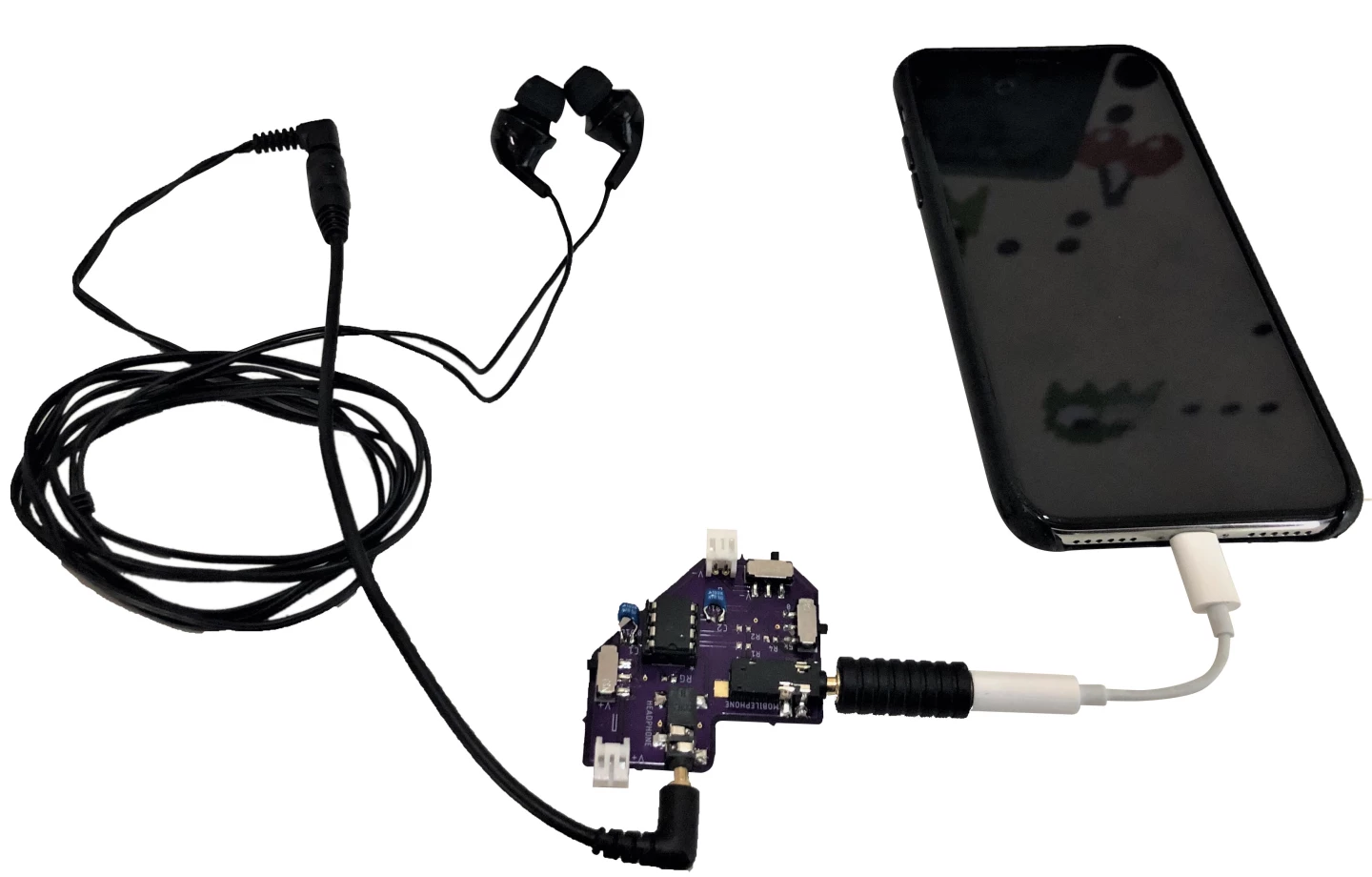While there are now some "smart" headphones that can perform multiple functions, the vast majority still just amplify music. A new system, however, could give those "dumb" headphones capabilities such as heart rate monitoring and gesture recognition.
Known as HeadFi, the experimental technology is currently being developed by a team led by New Jersey's Rutgers University.
At the heart of the system is an adapter module which the headphones are plugged into, and which is in turn plugged into a smartphone. Just about any headphones can be used – they don't need to incorporate sensors such as microphones or accelerometers.

Once the user places those headphones over their ears, a sealed cavity is created in each ear – the headphone driver is at one end of that cavity, the ear canal is in the middle, and the eardrum is at the other end. Because that cavity is relatively airtight, it's highly sensitive to changes in air pressure.
These fluctuations could be caused by touching a finger to the outside of the headphones – producing vibrations within – or by the pulsations of blood vessels inside the ear. In any case, the changes affect the electrical voltage that the system measures in each pressure-sensitive driver.
Therefore, by analyzing those telltale changes in voltage, the HeadFi software is able to monitor the wearer's heart rate, plus it can determine how and if the headphones have been touched – those touch gestures can in turn be assigned to different functions, such as skipping or playing music tracks.
Additionally, because the shape and size of the space inside each person's ear canal is unique, it produces unique changes in air pressure in response to standardized vibrations. This means that HeadFi is also capable of identifying individual users.
In fact, in tests conducted on 53 volunteers using 54 sets of headphones, the system was 97.2 to 99.5 percent accurate at identifying each person. It was additionally 96.8 to 99.2 percent accurate at monitoring heart rate, and 97.7 to 99.3 percent accurate at touch gesture recognition.
Although HeadFi has only been tested on hard-wired headphones so far, the scientists state that it could easily be adapted for use with wireless models.
A paper on the project – which also includes researchers from the University of Science and Technology of China, the University of Massachusetts Amherst, Microsoft and the Alibaba Group – will be officially published in October as part of the MobiCom 2021 conference.
Source: Rutgers University





